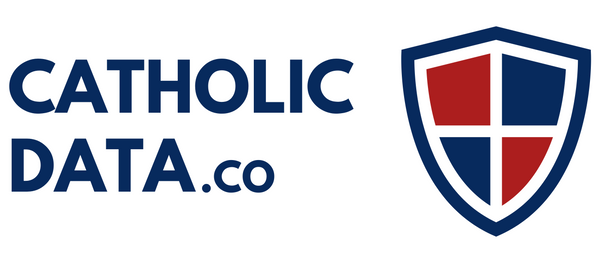FAQs
How was the data for the Parish and School Lists collected?
- In the process of compiling the School and Parish Lists, we consulted a number of different sources: national Catholic directories, diocesan websites, parish websites, online church directories, etc. When discrepancies were discovered, we deferred to the most local source possible. Consider it our own application of the subsidiarity principle.
- Even with such robust data collection and research processes, there remains a degree of disorganization and error. This is especially true of rural parishes/schools, merged parishes/schools, or parishes/schools that are undergoing significant transitions. And then there are those parishes whose websites look like they were last updated when Vatican II was still in session...we'll leave it at that.
- For those deeply immersed in the "Catholic World," these shortcomings are no surprise. Nevertheless, we have taken every measure within our power to correct these deficiencies in order to give you a state-of-the-art data solution. Such measures included hours of manual data point checks; submitting both lists to a national data firm for verification and standardization; and finally, implementing the feedback we've received from our valued customers.
What is your plan for updating your offerings?
- At the present time, we plan on updating our lists on an annual basis. Returning customers will be issued a special discount code to purchase any list for a fraction of the full retail amount.
How do I import a file from Catholic Data.Co into my organization's database?
- While we recommend checking with your organization's database manager, we have found the following approach to be the most feasible and minimize the greatest number of potential errors:
Export all of the contacts in your database into an Excel .csv file. Be sure to include a field for the contact's unique identification number as well as the contact's ZIP code.
In the .csv file, insert a new column adjacent to the ZIP code column. In the newly created column, insert the following function: =VALUE(LEFT(text, num_chars)).
- text = the respective cell from the ZIP Code column
- num_chars = 5
Once you've successfully completed this step, feel free to flash fill the remaining cells in the column.
Next, insert a column adjacent to the column containing the contact's unique identification number. This column will contain the proper diocese based off of the ZIP code.
Pull up your recently purchased Excel file from Catholic Data.Co. In the newly created column, insert the following function: =XLOOKUP(lookup_value, lookup_array, return_array, [if_not_found], [match_mode], [search_mode])
lookup_value = the cell containing the respective ZIP code for the contact
lookup_array = the entire column containing ZIP codes in the Excel sheet from Catholic Data.co
return_array = the entire column containing dioceses in the Excel sheet from Catholic Data.co
[if_not_found] = "n/a"
[match_mode] = 0
[search_mode] = optional
- Once again, feel free to flash fill the remaining cells in the column after completing the prior step.
- Select the both columns containing the contact's unique identification number and the respective diocese. Copy and Paste as Values. This ensures that all of the formulas are removed and you're left with only text.
- Depending on the requirements of you database, you may only need the Diocese and Unique Record ID columns. Feel free to delete the other columns.
- Finally, save the file as a .csv and upload to your database!
What database/CRMs are compatible with Catholic Data.co?
- All of Catholic Data.Co's files are .xls files. Once you've purchased your desired file, simply save as a .csv. Be sure to double check the data in the file as .csv files often alter the file's contents.
- Once saved, as long as your database accepts data in the form of a .csv file, you're good to go!
